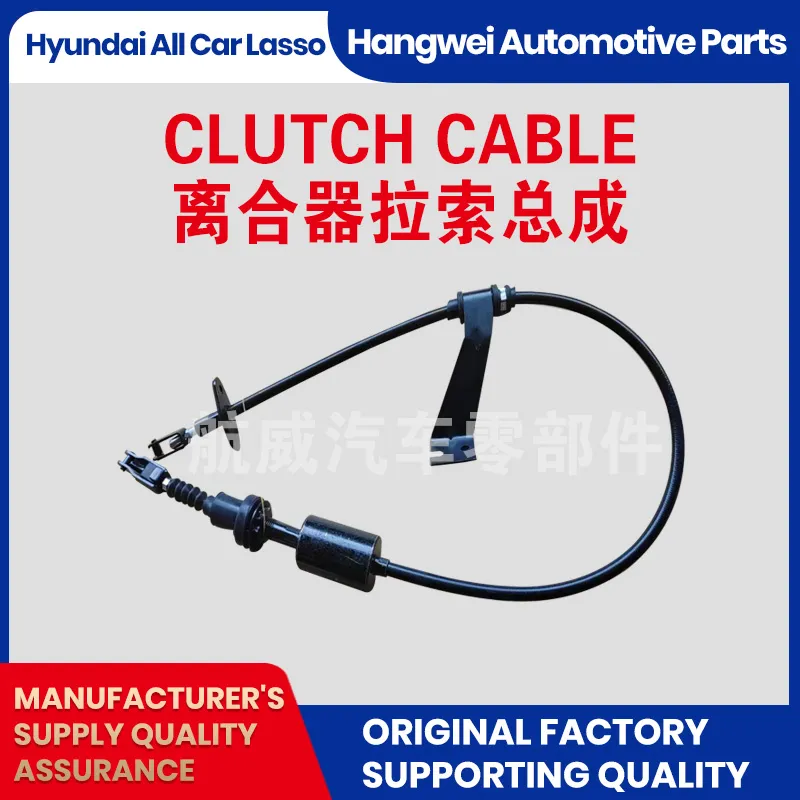automatic shift cable
Understanding the Automatic Shift Cable Key to Smooth Gear Transitions
The automatic shift cable is an integral component of modern vehicles, playing a crucial role in the operation of automatic transmission systems. This seemingly simple yet vital cable serves as a link between the gear shift lever inside the vehicle’s cabin and the transmission system itself, allowing for seamless gear transitions and enhanced driving experience. Understanding the function, construction, and maintenance of the automatic shift cable can help vehicle owners appreciate its importance and ensure their vehicles remain in top operational condition.
The Role of the Automatic Shift Cable
At its core, the automatic shift cable acts as a communication line within the vehicle's transmission system. When a driver moves the gear shift lever, the cable transmits the movement to the transmission control mechanism, enabling the vehicle to shift gears appropriately. This process is vital for maintaining the engine's RPM and ensuring it operates efficiently under varying driving conditions. Without a properly functioning shift cable, a vehicle could face numerous issues, including difficulty shifting gears, slipping, or even failure to engage the transmission.
Construction and Functionality
Typically made of high-strength steel encased in a protective housing, the automatic shift cable is designed to withstand tension and friction over time
. The cable is often equipped with various connectors and clips to secure it properly to the gear shifter and transmission, ensuring smooth and responsive gear changes.Modern automatic transmissions may employ various technologies, such as electronic controllers, making the role of the shift cable increasingly intricate. In many automotive designs, the shift cable also includes a mechanism that allows for the detection of gear position, providing feedback to the vehicle's computer system. This functionality is essential for systems that control performance parameters like fuel efficiency and emissions.
Signs of Shift Cable Issues
automatic shift cable

Like any mechanical component, the automatic shift cable can wear out over time. Drivers should be aware of certain warning signs indicating potential problems
1. Difficulty Shifting Gears If the gear lever feels stiff or requires excessive force to move, it may indicate that the shift cable is fraying or binding. 2. Unusual Noises Sounds like popping or grinding when shifting may suggest that the cable or its housing is damaged. 3. Gear Slipping If the vehicle unexpectedly slips out of gear or fails to engage certain gears, the shift cable may not be functioning correctly.
Ignoring these signs could lead to significant damage to the transmission, resulting in costly repairs or replacements.
Maintenance and Replacement
Regular maintenance is essential for ensuring the longevity and efficiency of the automatic shift cable. Vehicle owners should periodically check the cable for any signs of wear or damage, especially around connection points. Greasing the cable when necessary can also help maintain its flexibility and prevent problems associated with friction.
If a malfunction is detected, replacing the shift cable is often the best solution. This process typically involves disconnecting the old cable from both the gear shifter and the transmission, installing the new cable, and then adjusting it to ensure proper function. While some vehicle owners may choose to undertake this task themselves, consulting a professional mechanic can ensure that the job is done correctly and safely.
Conclusion
The automatic shift cable plays a pivotal role in the functionality of a vehicle’s automatic transmission system. Understanding its function and the processes surrounding its maintenance can help vehicle owners ensure smooth and efficient driving experiences. By remaining vigilant for signs of wear and taking proactive measures to address any issues, drivers can protect their vehicles' performance and longevity. Ultimately, appreciating the nuances of components like the automatic shift cable enhances our understanding of automotive technology and ensures a safer and more enjoyable journey on the road.
-
Workings of Clutch Pipe and Hose SystemsNewsJun.04,2025
-
The Inner Workings of Hand Brake Cable SystemsNewsJun.04,2025
-
The Secrets of Throttle and Accelerator CablesNewsJun.04,2025
-
The Hidden Lifeline of Your Transmission Gear Shift CablesNewsJun.04,2025
-
Demystifying Gear Cables and Shift LinkagesNewsJun.04,2025
-
Decoding Clutch Line Systems A Comprehensive GuideNewsJun.04,2025
